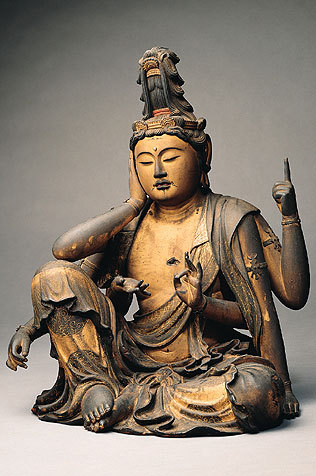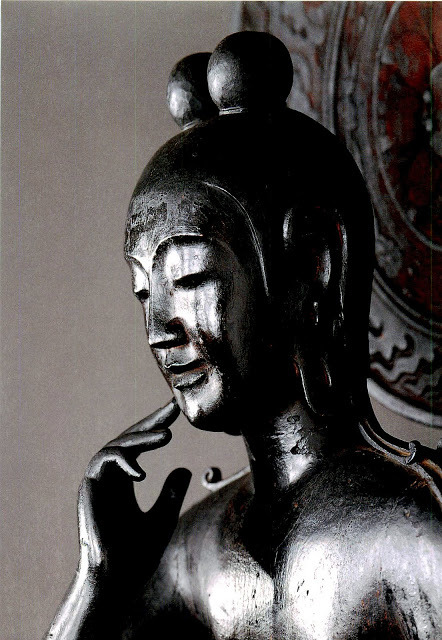Photo

UHO - Doji , the goddess of the sun Amaterasu , and as the manifestation of the Supreme Buddha
bronze, about 19th century
Japan
(C) RMN-Grand Palais (musée Guimet, Paris) / Thierry Ollivier
Section Japon du musée Guimet
178 notes
·
View notes
Photo

Inari, représentation féminine du Renard sacré de Fushimi (?)
bois peint
Japon
(C) RMN-Grand Palais (musée Guimet, Paris) / Philipp Bernard
Galeries du Panthéon Bouddhique du musée Guimet
286 notes
·
View notes
Photo

Zao Gongen (Mountain Avatar)
Japan, late Heian period, circa 1180
Sculpture
Wood, pigments, gold leaf, crystal. LACMA
365 notes
·
View notes
Photo

Nyoirin Kannon (Bodhisattva Avalokiteshvara in the form of Chintamanichakra)
Japan; Kamakura period (1185-1333), early 14th century
Asia Society
937 notes
·
View notes
Photo

Wood Sculpture, 12th century, Japan.. BritishMuseum
The Immovable King of Light’ Fudō (Sanskrit: Acala) is one of the Myō-ō (Vidyarajas), ‘Kings of Light’, personified spells and protectors of the esoteric Shingon sect of Japanese Buddhism. He is a constant enemy of illusion, pointing the way to enlightenment beyond the illusion of life and death. His name, Fudō, means ‘Unmoving’ and refers to the unchanging reality beneath his fierce exterior. Fudō’s attributes are the sword and the rope. With the sword he cuts through the evils of the world of illusion to show the reality beneath. Fudō is considered to be the patron of swordsmen. The sword in this statue is of particular interest, being in the shape of the sankosho or three-pronged vajra (thunderbolt), a Buddhist ceremonial instrument symbolizing the Buddha, the Lotus, and the kongotai or ultimate reality. With his rope Fudō ties the enemies of enlightenment. He is sometimes shown as the leader of the five ‘Kings of Light’, or with his attendants Kongara Dōji and Shitaka Dōji. Early statues show Fudō with two staring eyes and a pair of fearful fangs, as here. The piece is carved in ichiboku zukuri style (sculpted from a single block of wood), the arms made separately.
274 notes
·
View notes
Photo

This is an assistant to the Yakushi Buddha- the deity of medicine and healing. This sculpture dates back to around 718 AD. This photo was taken in Yakushi-ji, a temple that is part of the Nara UNESCO World Heritage Site. This statue is also National Treasure of Japan. Text and photography by
Rekishi no Tabi on Flickr
454 notes
·
View notes
Photo

Nyoirin Kannon Bodhisattva seated 如意輪観音菩薩坐像
Heian 平安 era, circa 1150 - Miidera (Shiga prefecture) 三井寺 滋賀県 - Japan
1K notes
·
View notes
Photo


Japanese National Treasure, Hanka Shiyui statue, 7th century AD, Japan. 半跏思惟像(中宮寺).
1K notes
·
View notes
Photo

“Shiyui Bosatsu” Bodhisattva by Enku (Buddist monk, 1632-1695) Takayama Museum of History and Art, Gifu Pref., Japan
544 notes
·
View notes









